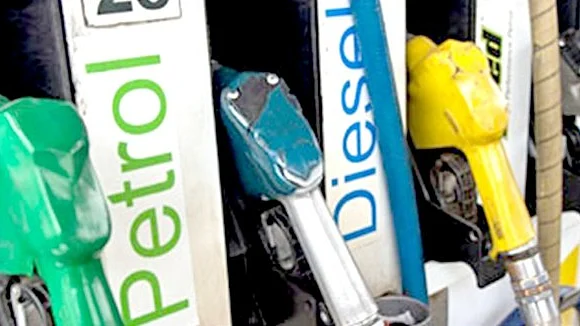Fuel price hike: A cruel joke on a billion and quarter people
Congress president Sonia Gandhi is not much off the mark when she accuses the government of setting a ‘new example of forced extortion’ by raising fuel prices for 22 times

The government’s claim that the money raised through the daily hike in fuel prices is going into the hands of the poor people is a joke more cruel than the one-paisa cut it announced at around the same time two years ago.
Congress president Sonia Gandhi is not much off the mark when she accuses the government of setting a ‘new example of forced extortion’ by raising fuel prices for 22 times. She has demanded immediate roll-back of the increase as the government with ‘profiteering’ at the expense of people instead of helping them during the present crisis.
As expected, Petroleum minister Dharmendra Pradhan, who has already shown he has quite a bit of deficit in his sense of shame, has come to the government defence by claiming that the money collected through the fuel price hikes is being spent on supplying food grains to poor people and putting cash in the hands of farmers, “rather than being routed to ‘family’ accounts as it happened during the UPA rule”.
Pradhan had cut a sorry figure in June 2018, when he came on television channels to explain the farcical one-paisa cut. The burden of this argument was as to how the government arrived at the 1 paisa figure after extensive calculations of all the relevant issues, including international crude prices and the burden on oil marketing companies due to the sacrifices they make in various ways, such as giving up a certain amount in the price of regulated products.
With humiliation written all over his appearance, he explained for the benefit of his countrymen how petrol and diesel prices were not based on crude prices alone and had a lot to do with the exchange value of rupee as well.
If his argument is taken on its face value, the important question that begs for an answer is why choose petroleum products for the mobilisation. Raising fuel prices and then blaming it on market forces is like adding insult to injury. If the idea is to find resources to fund the fight against coronavirus, the government might as well impose a special cess and make everyone pay.
The 2018 series of price hikes came when crude prices were ruling at an average of 80 dollars per barrel. The prevailing oil market is half as strong as that, but the government is raising the prices perhaps at the same rate, if not more. The gross injustice to consumers is that when crude prices had touched historical lows, they never got any benefit. The price difference was pocketed by the government and the oil companies.
If consumers find some good fortune ahead and the market begins to stall, which is mostly likely to happen, Pradhan’s game may soon be up. As COVID-19 cases go up globally, the oil prices are beginning to cool down. Brent is again sputtering, losing some of this month’s hard-earned gains, a tell-tale sign that its breakout over $40 may not be sustainable.
A second wave of the virus outbreak, especially in the US, and disturbing news from China of a more virulent virus could trigger another pandemic are already weighing down the demand picture. The first outbreak saw the demand curve plunge to panic levels, and so the fear of a second wave is holding the prices back from making any gains.
OPEC+ supply cuts have helped the oil price keep afloat, and after the stellar nearly 90 percent compliance in May, all eyes are on how the producers complied in June. Iraq, struggling to balance compliance with economic compulsions, will be a major factor swing factor. Another supply point to watch is the re-emergence of Libyan oil on the market, with the latest being reports that new fields could start up in the near-term.
More oil from Libya could bring back supply that the market had in a way forgotten, putting pressure on prices. Analysts say the latest high COVID-19 infection rates in the US, Brazil and the renewed outbreaks in Asia create a perfect cocktail to bring the traders’ worst fears back to the table. The risk is plenty in today’s market and how COVID-19 evolves will very much determine the future of prices this year.
The interesting point to note is whether the Modi government sticks with its policy of arbitrary pricing of fuels even when the market falls. The COVID argument will still be handy to deny any benefit of lower crude going into the hands of consumers. That would mean continued worry for the people amidst the misplaced priorities of the government.
Also Read: Congress protests against fuel price hike
Follow us on: Facebook, Twitter, Google News, Instagram
Join our official telegram channel (@nationalherald) and stay updated with the latest headlines
